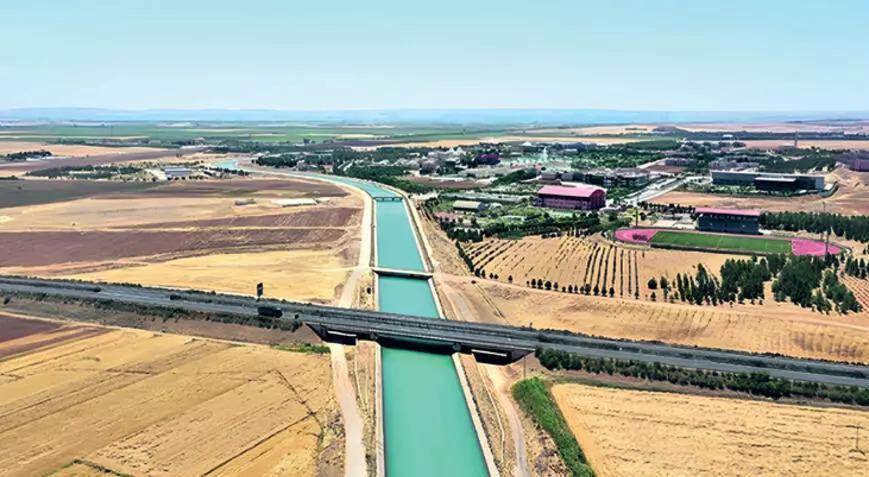New canal to boost agriculture in southeast
MARDİN

The new Mardin-Ceylanpınar Irrigation Canal, which carries water from the Atatürk Dam in Şanlıurfa to Mardin in southeastern Türkiye, has brought water to agricultural land equivalent to the size of 70,000 football fields.
Within the scope of the Southeastern Anatolian Project (GAP), a multi-sector integrated regional development project, the canal was completed and put into service.
With its 221-kilometer length, the "canal of abundance" will allow the region to harvest crops three times a year and boost farmers' income.
"The Mardin-Ceylanpınar Main Canal is the longest artificial river in Türkiye. At 221 kilometers long, it is longer than the Suez Canal and three times the size of the Panama Canal. The project, which conveys the waters of the Atatürk Dam from Şanlıurfa to Mardin, irrigates 70,000 football fields of agricultural land. When all sections are completed, 349,000 football fields of agricultural land will be irrigated,” the Agriculture and Forestry Ministry said in a written statement on Aug. 16.
The canal, which will supply water to 1 billion decares of land, cost 2 billion Turkish Liras ($36.8 million). With the canal, 35 percent of the country's grain needs will be met from this region.
"It is a historical event that the water of the Euphrates [River] will meet the fertile lands of upper Mesopotamia,” Dursun Yıldız, the head of the Water Policy Association, told daily Milliyet.
Yıldız noted that the project will double agricultural yields, expanding the range of products beyond grains to include citrus fruits and greenhouse farming.
Pointing out that bringing the Euphrates' water to the Mardin Plain will not only benefit the region and Türkiye but will also significantly contribute to neighboring countries' food security, Yıldız stated that excessive groundwater usage in the region over the last three decades would also curb.
Mehmet Şerif Öter, head of Kızıltepe Grain Trade Center, also highlighted that the canal could generate employment for approximately 300,000 people.
"The canal will irrigate these lands, and these lands will feed the entire nation. The project will be a source of livelihood for 300,000 individuals and breathe life into the region,” Öter said.
"We currently harvest twice a year. With the canal, in some areas, three harvests could even be possible annually. The Mardin Plain currently meets 20 percent of the country's wheat and legume needs. Once the canal is fully operational, the Mardin Plain will fulfill at least 35 percent of our country's needs. If production thrives, external dependence will decrease."
















